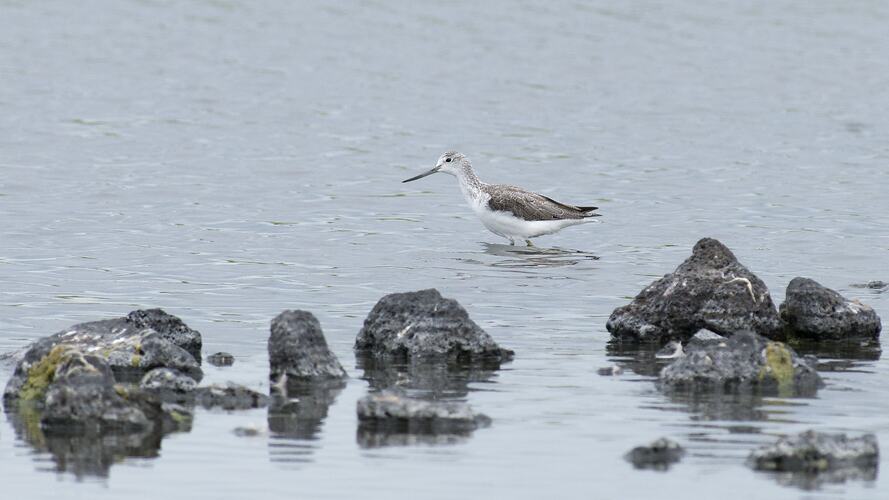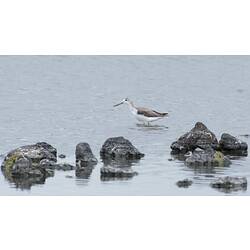General Description
Heavily-built wader with long, slightly upturned bill. Head and neck white, streaked with brown, grey and black (darker in breeding birds). Underside white; dark markings on upper breast and sides. Legs pale grey-green. In flight, upperwing dark and underwing white with faint brown barring. Larger than the similar Marsh Sandpiper. Length up to 35 cm; wingspan to 65 cm.
Biology
Found near edges of wetlands. Associates with other waders, especially the Marsh Sandpiper. Active, wary, excitable and noisy. Feeds on molluscs, crustaceans, insects and occasionally small fish and frogs. Feeds by picking, probing, sweeping and lunging; movements are often erratic, changing direction and dashing after small fish.
Distribution
Around Australia.
Habitat
Inland wetlands and sheltered coastal areas, including mudflats, saltmarshes, river estuaries, deltas and lagoons.
More Information
-
Animal Type
-
Animal SubType
-
Brief Id
Large wader; white underside; head, neck and upperside streaked with brown, grey and black.
-
Colours
White
-
Maximum Size
35 cm
-
Habitats
-
Diet
Carnivore
-
Endemicity
-
Commercial
No
-
Conservation Statuses
CITES: Not listed, FFG Threatened List: Endangered, EPBC Act 1999: Not listed, IUCN Red List: Least Concern
-
Taxon Name
-
Common Name
Common Greenshank
-
Kingdom
-
Phylum
-
Subphylum
-
Class
-
Order
-
Family
-
Genus
-
Species Name
nebularia



